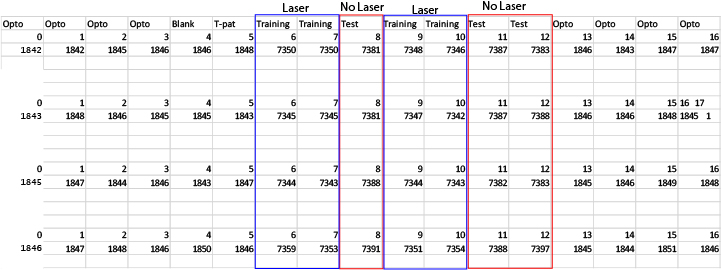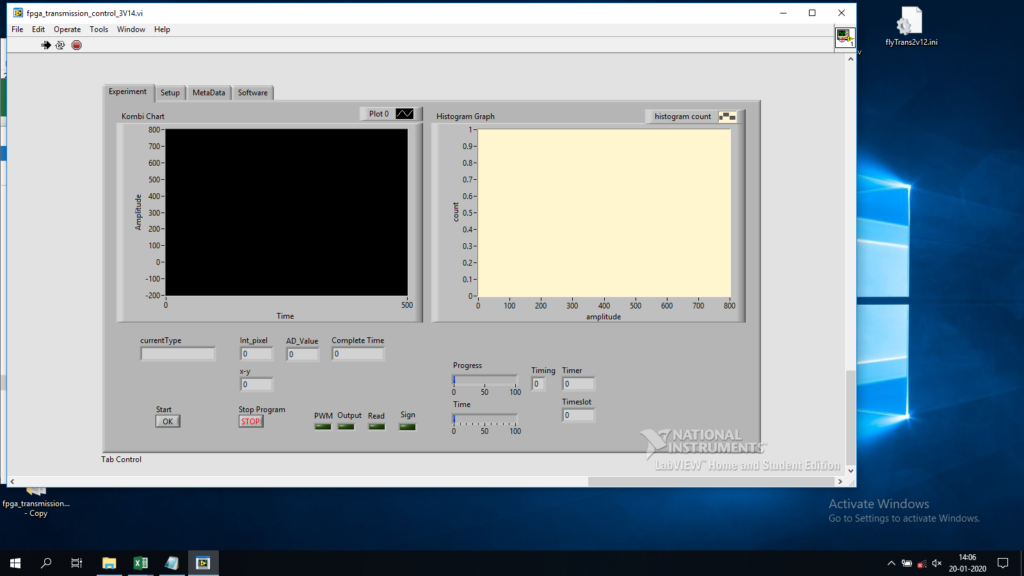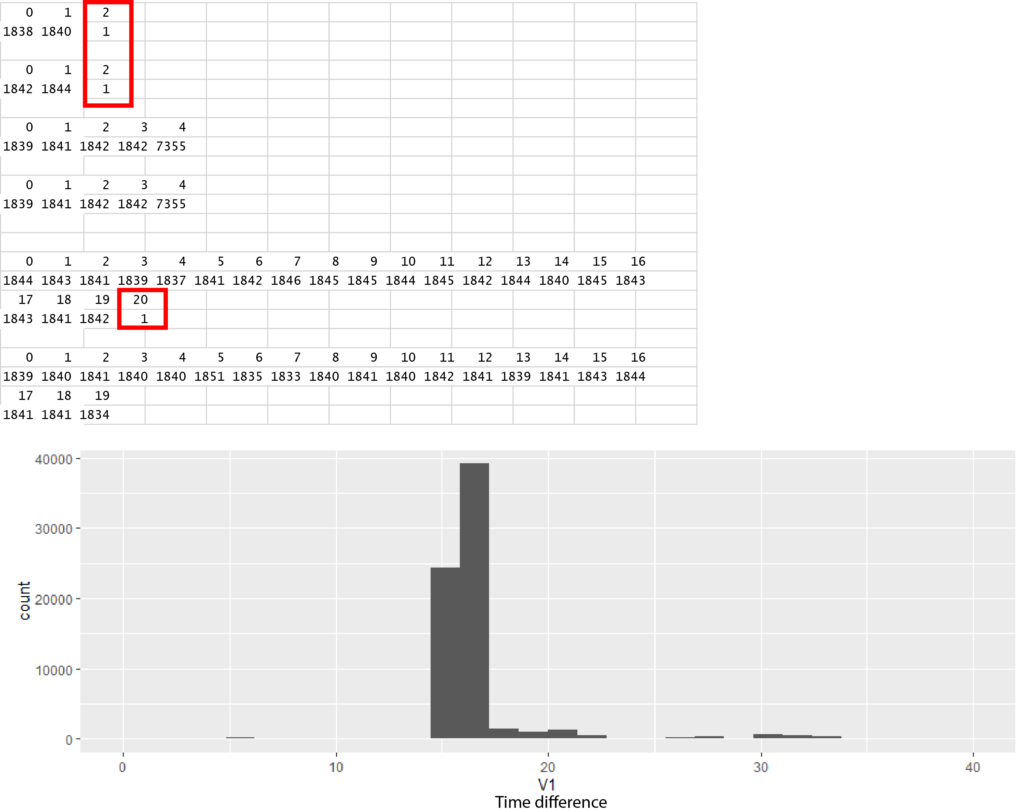Dwelling Time
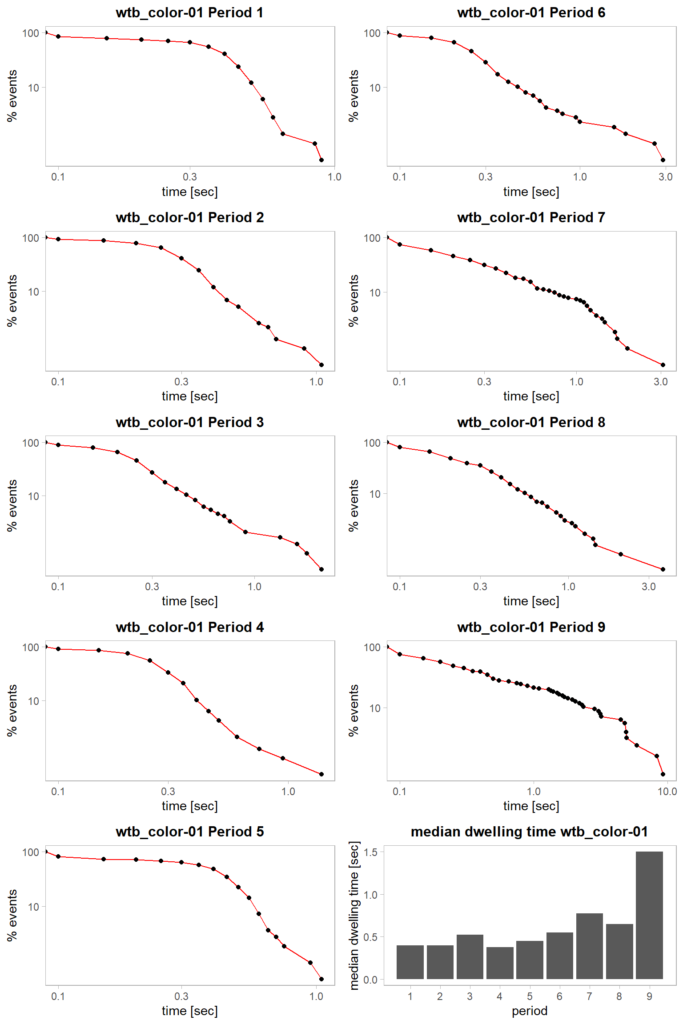
The code generates the dwelling time for each period as well as the median dwelling time for each period. The code has also been implemented on grouped data but it only generates graphs for one of the groups, not both. Currently investigating why

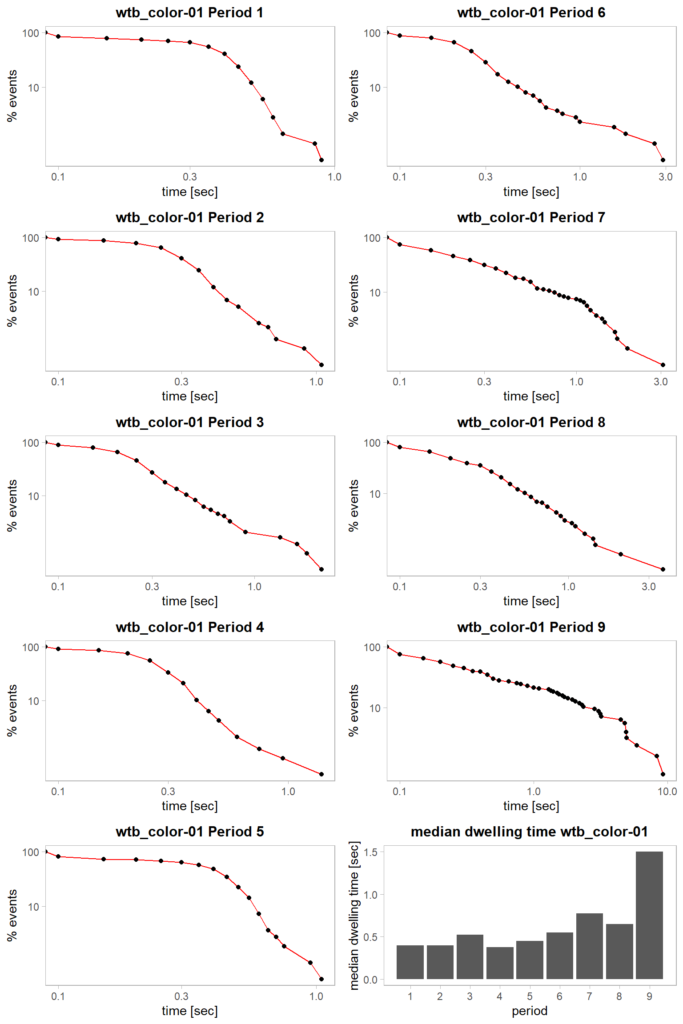
Valence and dopamingergic neurons
I have been sorting and feeding flies ATR (in total about 7400 flies divided between 170 vials). Emer has been conducting the experiments during the previous week continuing this week.
Including the flies from today we have a total of 172 experiments divided between 7 experimental groups. Including the data from the Turkish students it is well over 230.
I looked at the control experiments and they look as expected. Perhaps even better than what the Turkish students had.
Optomotor response
Slowly are we getting closer to getting a optomotor response
I made the following changes
- Glued flies to a needle rather than the plastic optic fiber
- Head of fly was not glued, the fly was able to rotate its head
- I put focus on making sure to get the fly as straight as possible
- Contrast between black and white was increased
- The light was adjusted to increase the brightness within the arena
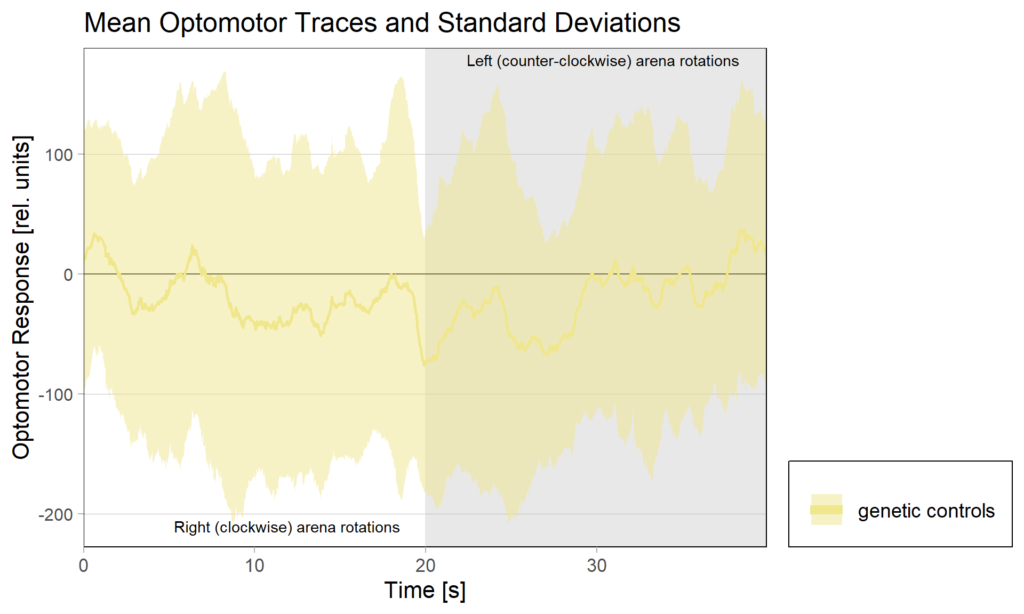
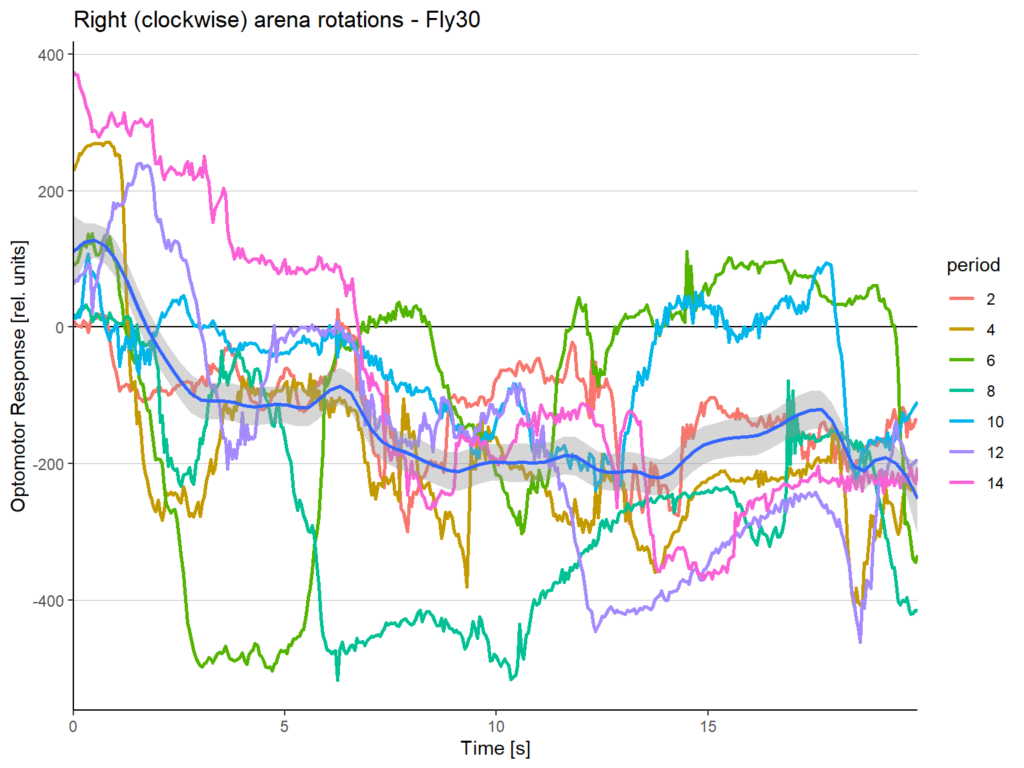

Optomotor Response not really working
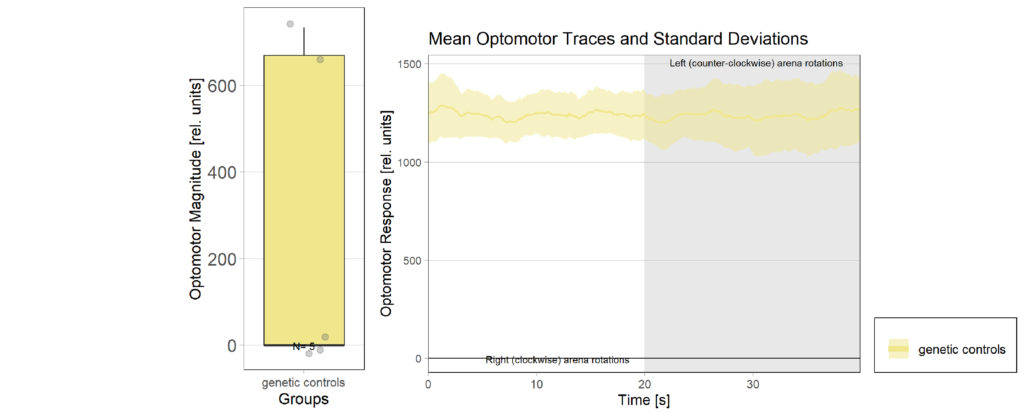

- Other projects I have been working on this week
- Working out the new FPGA software for Flight simulator
- Collecting flies for Optogenetics Experiment
- Implementing dwelling times in DTS R script
- Implementing Metadata comparison in R script
- Grant writing
Updates on Optomotorics and DTS evaluation
DTS: The graph below is an example image of how color according to category looks like. The output now adds a unique color for each category. The one below has three different colors as the pretest phase does not use any pattern and is therefor read as its own category.
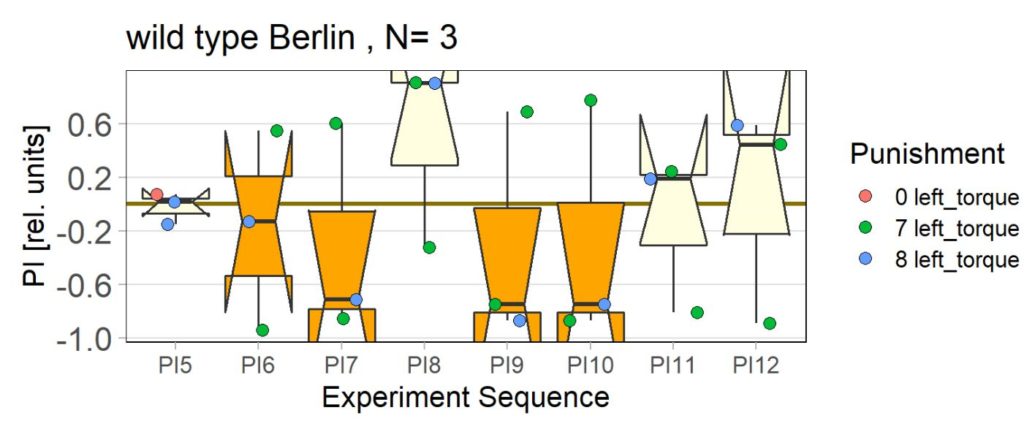
Optomotorics: The software worked as it should although it had a couple of issues. Wrong information in xml sheet was one of them: this is now fixed so that it enters duration as seconds and the correct terms for a_pos and j_pos are used
The other issue was that at the end of the experiment about 40-50 data points were missing/removed. My speculation was that this either had to do with data being removed at the end of the experiment or that it ended prematurely. Turns out that the later was the cause.
As simple as it might seem, there was a lot of investigation to find this bug. To fix this I simply had to replace if curr_count >= self.test_time() - 100:
with if curr_count >= self.test_time() - 30:
Preliminary results from MBON screen and habit formation
The different MBON types and their averaged preference index for Test2/3 during isolated operant component in the flight simulator. Each letter corresponds to a randomized MBON subtype. All but one is being displayed due to low sample size.
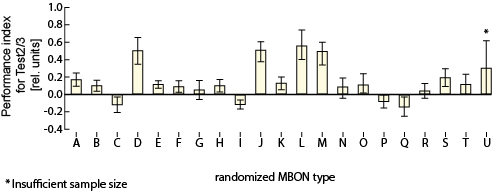
The FPGA does not measure at the preset 60hz, but rather at 60.41hz
| Time [s] | 100 | 200 | 300 | 400 | 500 |
| Nr of datapoints | 6040 | 12082 | 18124 | 24164 | 30205 |
| Hz | 60,41 | 60,41 | 60,41333 | 60,41 | 60,4 |
At a set frequence of 60Hz the FPGA overshoots the measurement with .41hz. For a 25 minute experiment as above this means an extra 10.25 seconds.
No pattern in time difference spikes, but they seem to coincide with timediff decreases
The histogram plotting the time differences in the data collection from the FPGA showed that an absolute majority of the data was collected with the set frequency, 60hz. There were a few outliers from these 16ms and to find out if these spikes occurred with any kind of pattern I plotted the time differences over time. While the increases seems to appear seemingly random, most time diff increases also seem to be accompanied with a time diff decrease.

Periods without laser has more data collection points
